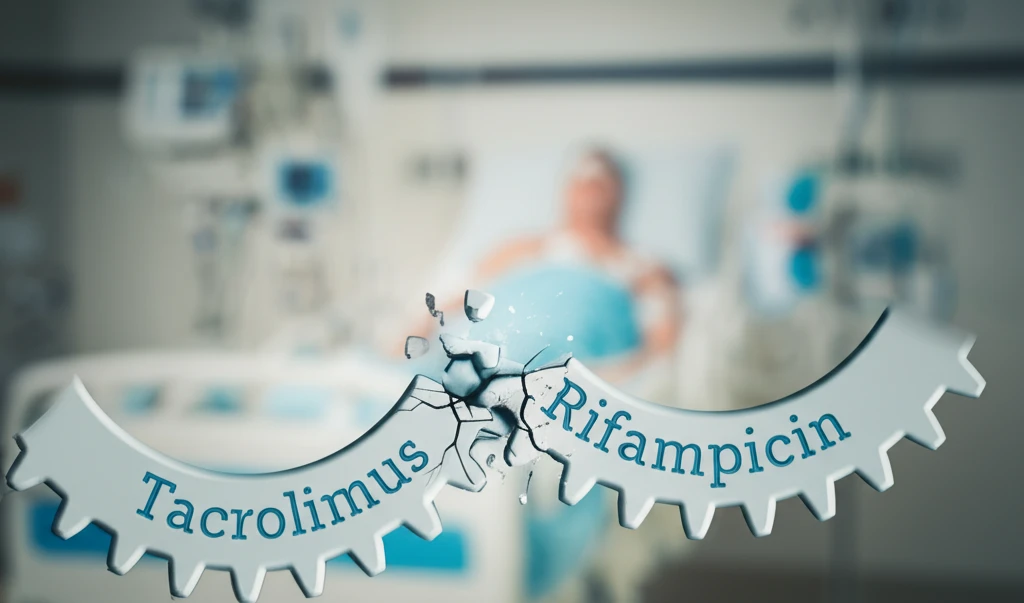
Tacrolimus and Rifampicin: What You Need to Know About This Risky Drug Interaction
"Navigating the complexities of drug interactions: A closer look at how rifampicin can impact tacrolimus levels, and what it means for transplant patients."
In the world of pharmaceuticals, drug interactions can significantly alter the efficacy and safety of medications. For patients undergoing transplants and relying on immunosuppressants, understanding these interactions is crucial for maintaining their health. One such interaction involves tacrolimus, a commonly prescribed immunosuppressant, and rifampicin, an antibiotic used to treat various infections.
Tacrolimus works by suppressing the immune system to prevent organ rejection after transplantation. Rifampicin, on the other hand, is a potent inducer of certain enzymes in the liver that are responsible for metabolizing drugs. When these two medications are taken together, rifampicin can accelerate the breakdown of tacrolimus, potentially leading to sub-therapeutic levels and increasing the risk of organ rejection.
This article delves into the complexities of the rifampicin-tacrolimus interaction, offering insights into how it affects tacrolimus levels and exploring alternative strategies to mitigate its impact on patient care. Whether you're a healthcare professional or a patient, this guide aims to provide a comprehensive understanding of this critical drug interaction.
The Tacrolimus-Rifampicin Interaction: Why It Matters

Tacrolimus, also known under brand names like Prograf and Envarsus XR, is vital for preventing organ rejection post-transplant. It inhibits T-lymphocytes, key players in the immune response. Therapeutic drug monitoring (TDM) is essential to maintain tacrolimus within a narrow therapeutic window. Too little, and the risk of rejection rises; too much, and toxicity becomes a concern.
- Reduced Tacrolimus Levels: Rifampicin significantly lowers tacrolimus blood concentrations, often requiring a dosage increase to maintain therapeutic levels.
- Rejection Risk: Sub-therapeutic tacrolimus levels can lead to acute rejection of the transplanted organ, a severe complication.
- Unpredictable Interaction: The extent of the interaction can vary among individuals, making careful monitoring essential.
Managing the Interaction: What Are the Alternatives?
When rifampicin is necessary, healthcare providers must closely monitor tacrolimus levels and adjust the dosage accordingly. In some cases, switching to sublingual tacrolimus, which bypasses first-pass metabolism in the liver, can help maintain therapeutic levels. However, this approach may not be suitable for all patients.
